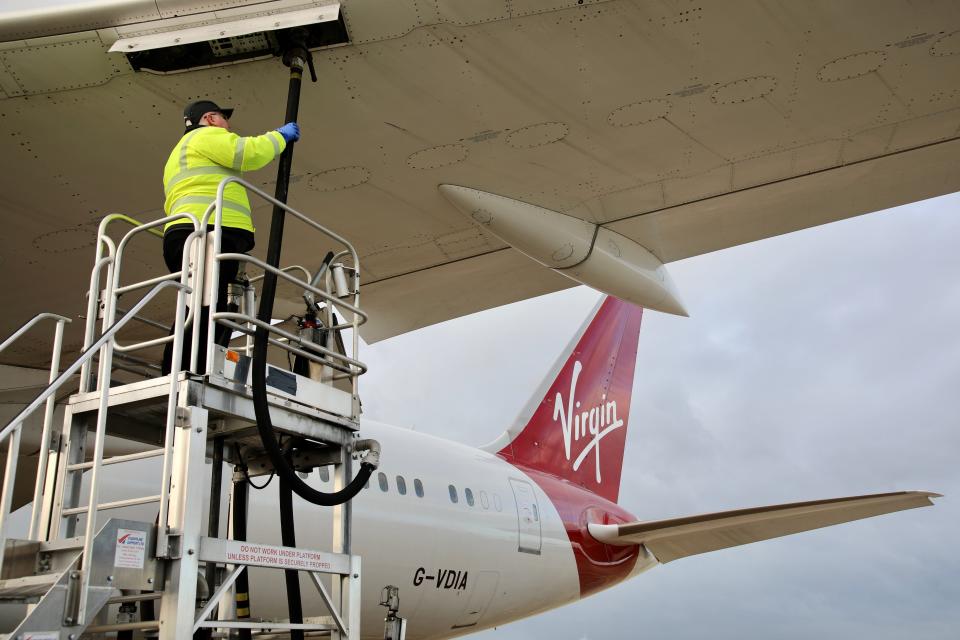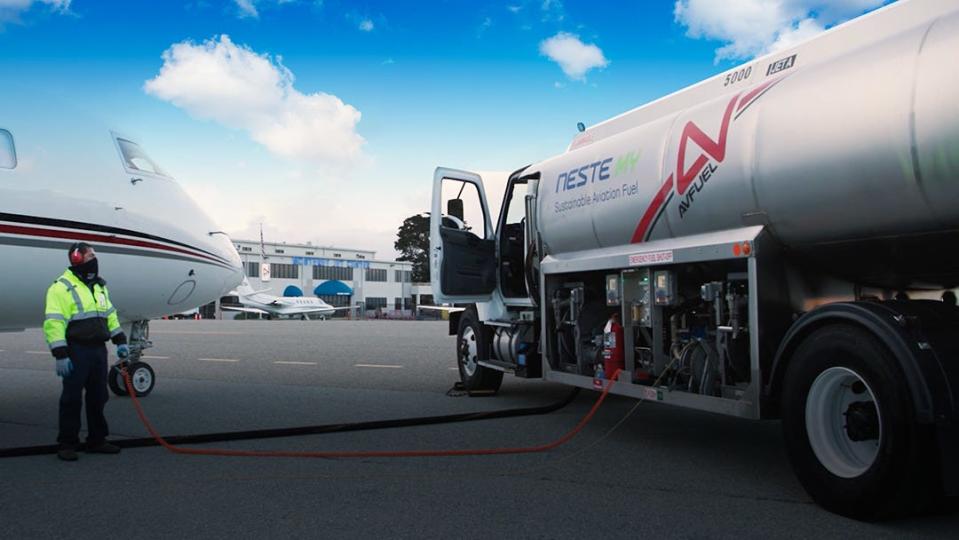Net Zero by 2050: Is SAF the aviation industry’s best shot?
Editor's Note: The following is part of a class project originally initiated in the classroom of Ball State University professor Adam Kuban in fall 2021. Kuban has continued the project, including this fall semester, challenging his students to find sustainability efforts in the Muncie area. The students pitched their ideas to Deanna Watson, editor of The Star Press, Journal & Courier and Pal-Item.
MUNCIE, Ind. – The list of challenges facing air travel is not a short one, and some frequent flyers would not hesitate to make that known. Yet, these challenges are not exclusively on the side of the consumers. The world’s airline companies (over 5,000 in number) face a lengthy list of their own.
One of the most prominent issues has been regaining the pre-pandemic air traffic the industry experienced in 2019. The COVID-19 pandemic ensured that corporate travel would be slow to recover, but recently, leisure flights have increased, furthering the aviation sector’s ever-growing emissions problem.
In fact, according to an Environmental Protection Agency report from 2021, 10% of transportation emissions in the U.S. come from large business jets and commercial airplanes. Additionally, global aviation produced almost 3% of the world’s CO2 emissions in 2018. While that may seem relatively low, if the aviation industry were a country, it would be the sixth-largest nation in terms of greenhouse-gas-emissions standings.
To combat this, commercial airlines such as Delta and United have pledged to become 100% green by reducing greenhouse gas emissions by 100% by 2050.
Their solution, in part, is Sustainable Aviation Fuels (SAF).

These synthetic fuels can be the product of several different feedstocks including algae, plant oils, fats, greases, sugars and waste streams. According to General Electric’s Department of Aerospace, “When burned in a jet engine, it (SAF) provides the same power as conventional petroleum-based jet fuel with significantly less lifecycle carbon emissions.”
The idea for a lower-carbon alternative to conventional jet fuel has been around for years, but the push to produce, transport and utilize sustainable fuel has ramped up significantly with the goal of achieving net zero.
According to United’s SAF outline, only 0.1% of the airline’s overall fuel supply is sustainable.
“Even less than that. I think you’ll find that you need to add a few more zeroes to that decimal when you factor in that only 15 million gallons of the pure SAF product was produced last year,” said Keith Sawyer, manager of alternative fuels at Avfuel, a leading supplier of fuels and services to private and general aviation aircraft.
Companies like Avfuel have begun to play a large role in supplying SAF to various airports and FBOs (fixed-base operators), which are outside companies given permission by airports to provide aviation services such as fueling and aircraft maintenance on their premises. But as it currently stands, the only airports in the country receiving the fuel by pipeline are Los Angeles (LAX), San Francisco and Oakland while everywhere else receives their supply by truck.

Larger airports are adopting sustainability practices in other areas to aid the efforts of SAF.
Stephen Freibrun is the principal aviation advisor at Inner City Fund (ICF), a global advisory and technology provider. Freibrun works with airports on commercial strategies, and his team has turned to green concessions to reduce the environmental consequences of the post-pandemic increase in travelers.
“There are some airports that are busting at the seams,” Freibrun said. “You’re seeing their growth exceed capacity, and they’re struggling to keep up.”
Green concessions encompass practices from proper waste management and recycling to water reduction, use of environmentally friendly materials and packaging, and energy-efficient lighting inside of commercial airports. Sawyer suggests that on the aircraft side of this effort, more efficiently built engines and airframes are being introduced while more direct flight routes are being employed to help maximize the benefit of SAF and other sustainability approaches.
As the demand for the SAF product rises, the conversation is starting to shift to regional and municipal airports that house private and business aircraft. For them, SAF can be hard to obtain, and in some instances, the fuel may not be ready for several more years.
“For every commercial aircraft flying over the United States, there’s 20 private aircraft,” Sawyer said. “But they account for only 3.5% of the total jet fuel demand. About 1.5 billion gallons goes into business and general aviation while the rest, about 22 billion, is going into your airlines.”
The disparity in SAF distribution exists because it isn’t cheap. Traditional airline jet fuel in the U.S. retails around $2.85 a gallon while SAF finds its price point at $6.69 per gallon, according to data from Argus Media, an energy-pricing agency. The most widely available SAF is currently made from cooking oil and other waste fats and greases. That high price can largely be attributed to low supply of SAF as well as significant costs required to produce and blend the sustainable fuel.
In addition, there is a geographical obstacle given that the only two producing facilities of the fuel in the country are in California. Until it becomes readily available, whether that be by pipeline transportation or new production facilities, the smaller airports will have to wait.
In Muncie, the lack of SAF holds true.
The Delaware County Regional Airport already implements solar panels in its airfield along with other sustainability tactics but has yet to acquire any of the sustainable aviation fuel at their FBO, the Muncie Aviation Company.
Tim Baty is the manager at Delaware County Regional Airport. Although his facility hasn’t gotten its hands on SAF, he is encouraged by the fuel’s potential environmental benefit and positive community impact in Muncie.
“It could be pretty significant,” Baty said. “Although most people think we are a small regional airport, we actually do pretty well on operations. Most of our corporate jets that come in are taking on 300 to 400 gallons of fuel at a time, and we have a new flight school that just went in that will see 10 aircraft and 20 instructors that pretty much fly around the clock. All of that is producing emissions over Muncie, so sustainable fuels would be outstanding for us.”
Most signs point to SAF being the industry’s saving grace.
Currently, several accepted feedstock exist for SAF, and in 2021, President Biden ordered that three billion gallons be produced by 2030. If it seems as though reaching net zero is near impossible, that is justified, but the industry is putting major stock into the technology; it’s only a matter of time before its accessibility becomes nationwide.
This article originally appeared on Lafayette Journal & Courier: Airline companies look to sustainable aviation fuel to reduce emissions
